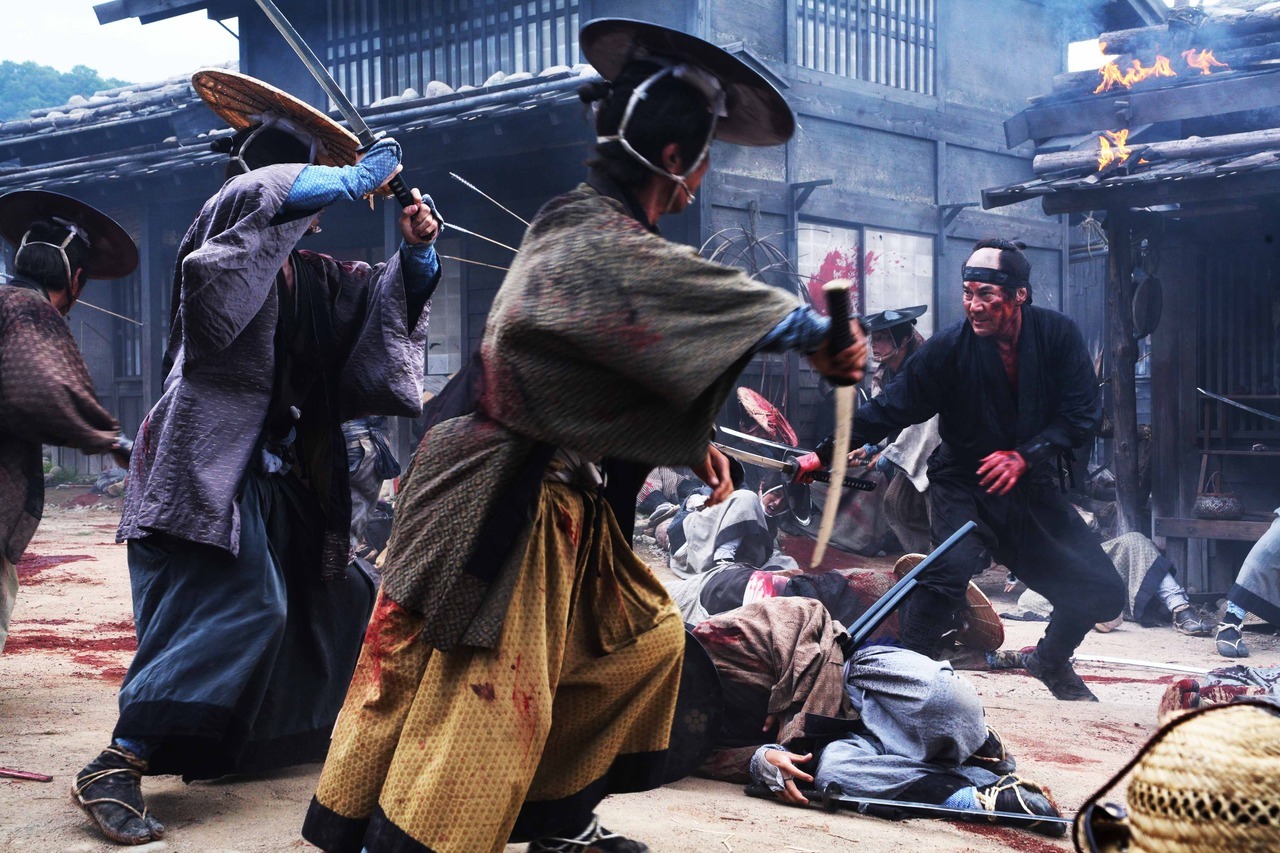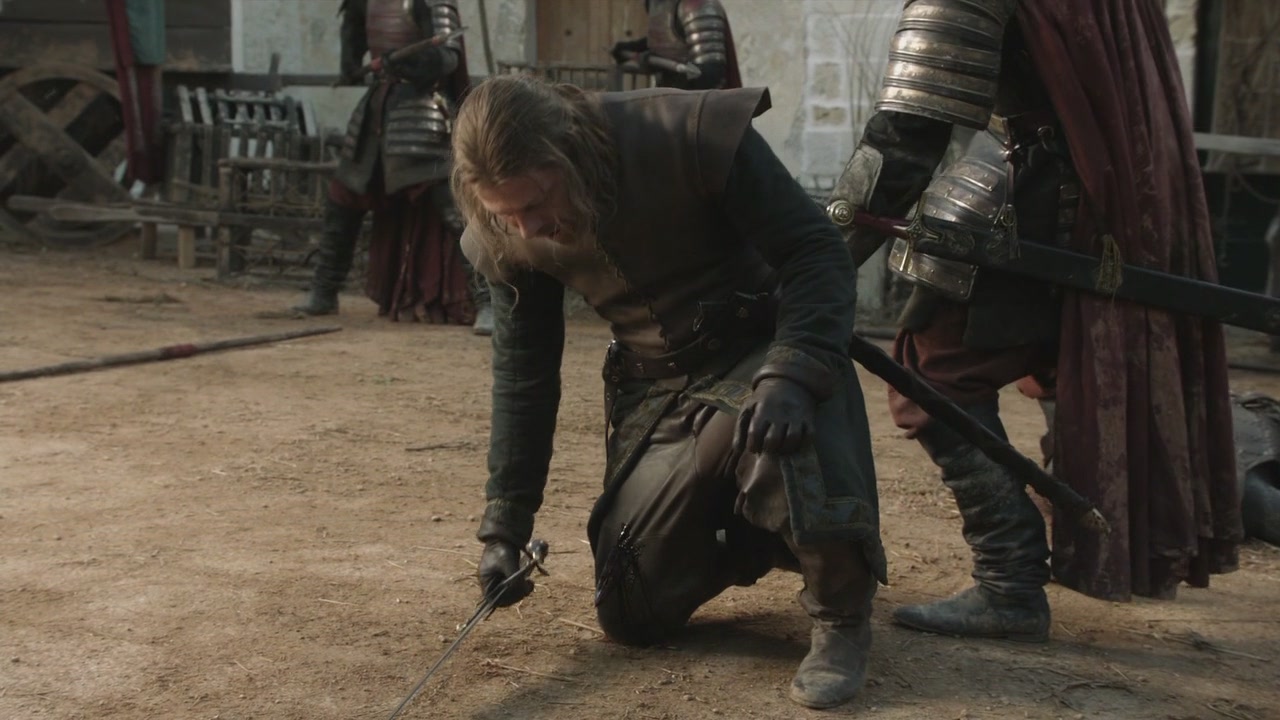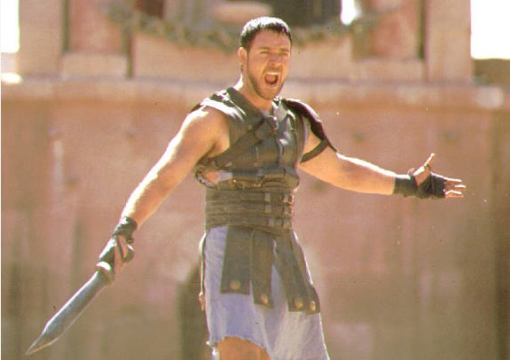 |
| "He who values his life dies a dog's death" |
One of the driving reasons behind altering HP is the attitude I often see in players who have achieved a certain level. Were I to tell them for their heinous crimes that the guard has been dispatched to arrest them the response I would ordinarily get is "So what?" Rightfully so, a 5th level fighter is rather adept at dispatching some common guards who on all accounts should be no more than 2nd level. Throwing more guards at him won't exactly solve the problem if his AC is sufficiently good. I'm a big proponent against level inflation so I have zero desire to start ratcheting up the levels of guardsman. While I'm not a big fan of the Eberron setting I did highly appreciate the idea that the only high level characters left, besides a few monarchs were the PC's. With no one else around it falls on the PC's the shake up the kingdom, dispatch some monsters and save the world. For that reason I cannot in good conscious merely amp up the level of the town guard to be on par with the PC, it would be unfair to the heroic genre and the goals of fantasy gaming. Incendiary opinions aside rather than hand-wave it away by saying the guards superior numbers take this vagrant down I would like for there to options in the mechanics to accomplish this. Either by combat tactics (flanking/surrounded) or a change in the foundation of Hit Points. Why not both?
I've been working on a two pronged attack in recent playtesting to make HP dynamic and to make swarms of enemies terrifying. One thing that the playtests keep circling back to is the question of lethality. I enjoy a challenging game, I enjoy it when a game encourages you to prepare before a journey, whether it be quaffing Witcher potions or swapping to a more appropriate shield and a thrusting weapon when moving through the narrow caves in Demon's Souls. Running head long into danger is great for swashbuckling action fantasy which is certainly fine but I don't want it to be the standard. Let me rehash that for a moment, I like running into danger and getting in over your head, it's a great staple, however, that should be a conscious choice with consequence rather than the defacto standard across the spectrum of characters. Instead I like PC's to be cautious, to realize when fleeing is the better part of valor through the use of obvious cues. "They outnumber us 3 to 1, let's get out of here", or "If I stay out in the open the Archers will turn me into a pin-cushion" or "the two of them are already circling me, I need to put my back to a wall unless I want a spear through the leg."
 |
| Honorable Duels fall short of opportunist guards |
Combat tactics such as Flanking, Surrounded, and Mob Violence have been alluded to in prior posts and I'll put them up as a separate entry after they've reached a stable version. For now let's deal with Hit Points. Before I begin listing the current system I've devised I decided to take a look back at the redesign goals I had going all the way to the beginning. Both of the these posts were from 2011, my how time flies.
Armor and Hit Points
Hit Dice & Hit Points
In the first post I was musing on the nature of HP conceptually. Back then I was still sticking with my defense hierarchy where Defense came first, followed by Hit Points, followed by Armor before one could sufficiently stab you in the heart. A sound idea at the time but it was quickly supplanted because it made each combat unbearably long. Turns out when you have three lines of defense you are three times harder to kill. Where's the shock and surprise? Looking back at the second post I'm beginning to think I was a much better writer back then. Hoh oh! Of course back then I spent about two days before I finished editing and submitting a post, nowadays I spend considerably less. As I'm reading through the second post I find myself chuckling because both ideas I had proposed were later changed to a format I initially discarded. When I later got rid of Ability Score modifiers HP had to be changed; at the time your Base HP was equal to the higher of your Key Ability Score; if you wanted your players to be extra tenacious or planned on hitting them hard and often you were encouraged to instead sum the two Key scores. This led to giant pools of HP which was fine because at the time it was not abnormal for a weapon to be doing 2-3 dice of damage per hit and players were dropping like flies. Oh how far we've come.
As I'm reading through the second section on how you would conceptually justify using any attribute to contribute to HP rather than the standard of Constitution I'm reminded of a fun gladiatorial system I created based on the same premise. While interesting and certainly unique had it's fair share of problems not the least of which being the amount of time invested with each random combat (not to mention the time I spent creating the system!) but in the end it is simply not compatible with the current streamlined combat system. Although the original design outlined planned to include it as an optional mod it is much more likely to sit on the cutting room table at this point. Well, the trip down memory road has certainly been enjoyable but now it is time to take a look at the most recent HP system I've devised.
For a while there an idea I was very satisfied with (and still am but my design ethos has taken a nouvelle turn) which is to roll HD in between any major battle excluding back-to-back skirmishes. I like this approach quite a bit because it flaunts HP as a matter of luck, sometimes it is good and sometimes it is bad. Sometimes you're 5th level character can take on an entire regiment, other times he rolled so poorly that he has to cut and run. During play I preferred to have HP rolled the first time you are about to take damage. This way my players, the braggarts that they are, didn't know exactly how strong they were until steel was drawn and blood ran cold. It was nice but the problem I had was that PC's simply had too much HP. Using Labyrinth Lord none of my low level enemies were coming close to whittling away a PC's Hit Points to be actually threatening. This meant that each encounter had to be lethal in it's own right. I'm typically not in favor of each combat being life and death, in fact I often prefer the exhaustion model (but abhor 5 minute work days, whether they be myths or realities is another matter entirely) but there is one method I've seen that could work well.
In Breath of Fire 3 whenever you were knocked out in combat you came back afterwards but with a lowered maximum HP (10%) signified by your HP displayed in yellow. You could rest and set up camp to restore HP like any traditional D&D game. It was a nice way to interact with fellow party members and to restore HP without relying on the sin of health packs. The problem is that Yellow HP is stuck with you until you receive proper care at an Inn. Simple and easy to understand I plan to adopt something similar in the near future. The other alternative when dealing with life and death battles and frequently changing HP is to introduce another resource to keep track of for long term damage. Something like mortal wounds my eternal fling.
Since HP was effectively resetting after each major encounter (provided they weren't being chased or roused the entire dungeon) they were fresh for the next fight. This is where the Rule of Three was originally developed. These 5th level characters could roll 5 dice but were limited to 3; higher level meant a better probability and thus greater than average (10.5) HP. It's not a bad system, and looking back it will very likely be included as an optional rule in the modular core ruleset I am developing.
After the Rule of Three [which really deserves its own post: "You may only ever benefit from three dice"] was put into place I thought it might be fun to try out 3d6 D&D rather than a straight D20. I assure you, this is in no way affected by my players penchant for losing dice! Nevertheless, with our bounty of six sided dice we set out to try our hand at bell-curve D&D. For the most part we liked it, it led to some extreme difficulty interfacing with the aforementioned Gladiatorial combat (currently in the scrapped) but all-in-all it led to a fun and fast Critical system. Best of all it worked wonders with the Rule of Three where I as the DM could assign them bonus dice for well articulated actions, fancy maneuvers or crazed tactics and that extra die would be in their favor but not abundantly so. Each side still had a range of 3-18 but the player would have a better distribution of results.
I congratulate you for making it to the end of my long-winded run around. The next post will be nouvelle approach I've taken to HP this year and some of the blessings, flaws and occasional weirdness it brings to the table. Stay tuned.





No comments:
Post a Comment